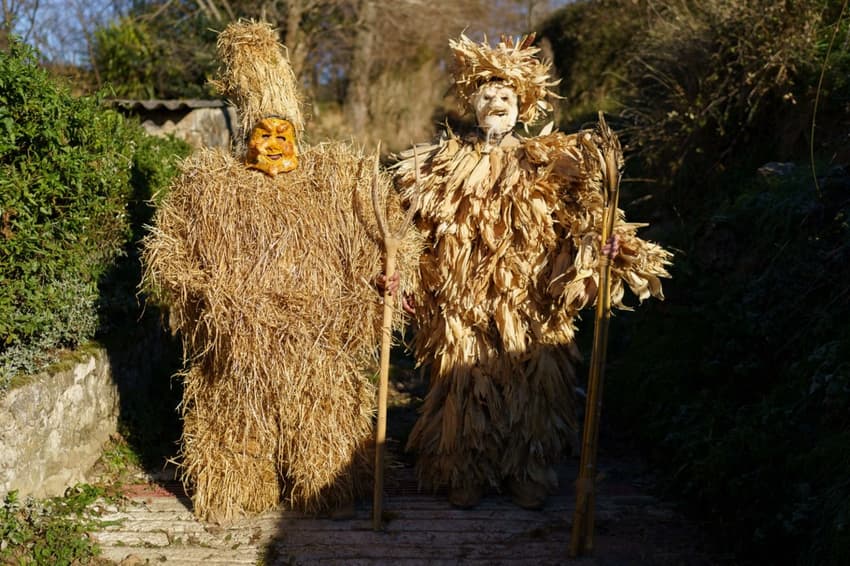One of the more bizarre of Spain's many festivals and the first of the year is La Vijanera, a type of Carnival which features around 60 participants dressed in unnerving costumes who perform in different scenes with the aim of banishing the previous year and making way for the new one.

It usually takes place on the first Sunday of January in the Cantabrian village of Silió in northern Spain.

La Vijanera is believed to date back to pre-Roman times and celebrates the end of winter and changing of the seasons, with pagan traditions relating to nature and shepherding living on to this day.

With a cast of wacky characters including the Madame (la Madama), the Gentleman (el Caballero), the Doctor (el Médico), the Devil (el Diablo) the Old Woman (la Vieja) and more, the ensemble perform in different theatrical acts, dance around and entertain by-standers.

Some of the most important participants are the Zarramacos, who dress in sheepskin and wear tall, conical hats (shown below).
Advertisement
They jingle cowbells which are tied to their bodies to ward off evil spirits from the coming year.

La Vijanera is not the only bizarre masquerade that takes place in rural areas of northern Spain and other parts of Europe with Celtic roots. The Entroido Carnival in Laza in the nearby region of Galicia and Zamarrones Carnival also in Cantabria also stand out for their grotesque, animalistic masks and peculiar rituals.

One of the other main characters of La Vijanera is the Bear (El Oso), a youngster dressed in sheep skin who symbolises winter. The celebrations end with the symbolic 'killing' of the bear, marking the end of winter and the ushering in of spring.

Even though you may have to wait another year before getting the chance to witness this intriguing spectacle, it will certainly be worth it when you do, as La Vijanera's growing popularity has ensured it was named a festivity of both national tourist interest and cultural interest by the Spanish government in recent years.








Join the conversation in our comments section below. Share your own views and experience and if you have a question or suggestion for our journalists then email us at [email protected].
Please keep comments civil, constructive and on topic – and make sure to read our terms of use before getting involved.
Please log in here to leave a comment.